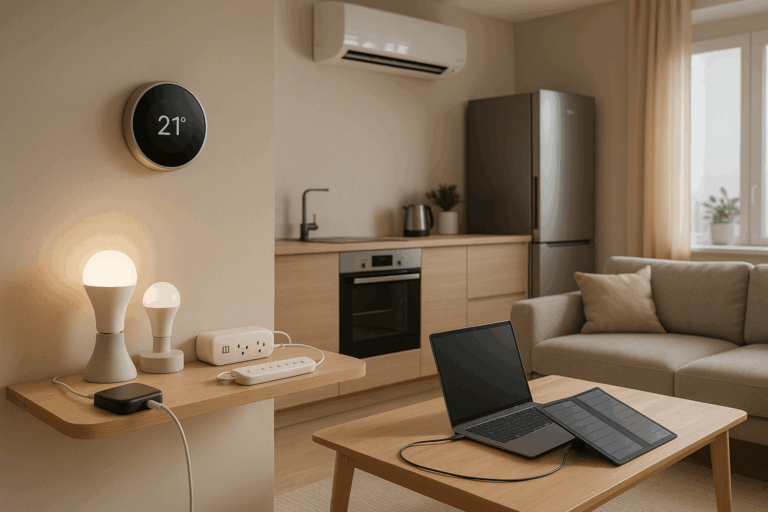🌍 In a world grappling with climate change, scarcity of resources, and an undeniable need for environmental repair, businesses play a significant role in driving this green revolution. With the paradigm shift towards eco-consciousness, the phrase ‘Greening the Workplace’ has gained significant traction. But what does it mean? How can we transform our workplaces into greener, more sustainable spaces? In this comprehensive guide, we delve deep into the realm of creating an eco-friendly work setup and its implications for a sustainable future.
To set the context, ‘Greening the Workplace’ is a comprehensive approach to make workplaces more environmentally friendly and sustainable. It encompasses a wide spectrum of strategies ranging from energy efficiency, waste management, green procurement to promoting a culture of sustainability among employees. 🌿 The goal is simple – reduce the ecological footprint of the workplace and contribute towards a more sustainable world.
In this extensive article, we will dissect the concept of ‘Greening the Workplace’, examine its significance, and explore practical strategies to achieve it. Whether you are a business owner, a manager, or an employee, this guide aims to equip you with the knowledge and tools needed to contribute to the green transformation of your workplace.
Why the Urgency?
Let’s take a step back and understand why this topic is so crucial today. The International Panel on Climate Change (IPCC) reports suggest that businesses account for a significant proportion of global greenhouse gas emissions. Thus, the urgency to transition to greener, eco-friendlier workplaces cannot be overstated. 🏭
Moreover, greening the workplace goes beyond just environmental implications. Studies suggest that green workplaces can enhance employee productivity, well-being, and overall job satisfaction. Also, businesses that demonstrate a commitment to sustainability often enjoy a better reputation among customers, investors, and stakeholders. Thus, it’s a win-win!
Navigating through the Article
First, we will delve into the core principles that underpin the concept of ‘Greening the Workplace’. Following that, we will explore the diverse range of strategies businesses can adopt, illustrated with real-life examples and case studies for more context. From energy conservation and waste management to the inclusion of green spaces and promoting a culture of sustainability, we aim to provide a holistic view of the subject.
Moreover, the article provides practical tips and guidelines for implementing these strategies, considering various business sizes and industries. We understand that one size doesn’t fit all, and each business has unique requirements and challenges. Thus, our recommendations are versatile and adaptable. 🔄
Lastly, we will look at the bigger picture – the implications of these green initiatives for a sustainable future. Through this discussion, we aim to inspire and motivate businesses to take the leap towards greening their workplaces.
Are you ready to join the green revolution? Let’s dive right in! 🚀
🌱 Decoding the Concept of Greening the Workplace
With an increasing recognition of the impact of our daily habits on the environment, the concept of ‘greening the workplace’ has become a significant discussion in many corporate environments. As businesses strive to be more responsible, the idea of creating an eco-friendly work setup has been embraced as a step towards a more sustainable future.
But what does ‘greening the workplace’ really mean? It’s not just about filling the office with plants or recycling office waste, although these are certainly part of it. Rather, it refers to the wider process of making the workplace more eco-friendly by reducing energy consumption, minimizing waste, improving air quality, and creating a healthier, more productive working environment.
To truly understand this concept, we need to dig a little deeper into the various aspects involved in greening the workplace. From understanding the benefits to knowing the different strategies you can employ, this comprehensive guide will help you embark on your journey towards a more sustainable work setup.
📊 The Benefits of Greening the Workplace: A Comparative Analysis
| Benefits | Traditional Workplace | Green Workplace |
|---|---|---|
| Energy Consumption | High | Reduced |
| Waste Generation | High | Minimized |
| Air Quality | Can be poor | Improved |
| Productivity | Can be affected by poor environment | Increased due to healthier surroundings |
| Cost | Can be high due to inefficiencies | Reduced in the long term |
As you can see from the table above, a green workplace offers multiple benefits compared to a traditional workplace setup. While the initial investment may be higher, the long-term savings and improvements in productivity make it a worthwhile investment.
But how can you create such a work environment? There are several strategies you can employ, ranging from simple changes in habits to larger investments in eco-friendly technology. The key is to start small and gradually build on your efforts.
💡 Strategies for Creating an Eco-Friendly Work Setup
When it comes to creating a greener workplace, there’s no one-size-fits-all approach. What works for one company may not work for another, depending on factors like size, location, and industry. However, there are some universal strategies that can be applied to most workplaces. Here are a few:
1. Energy Efficiency
Reducing energy consumption is one of the most effective ways to make a workplace more eco-friendly. This can be achieved through various means, such as upgrading to energy-efficient appliances, optimizing natural light, and implementing energy-saving practices among employees.
Here is an interesting video on energy efficiency in the workplace: “Energy Efficiency: First Fuel of a Green Economy” (channel: TEDx Talks).
2. Waste Reduction and Recycling
Another key aspect of greening the workplace is minimizing waste and implementing effective recycling programs. This can involve steps like reducing paper use, recycling office supplies, and composting food waste.
For more insights on this, you can watch the video “Recycling in the Workplace: A Simple How-To Guide” (channel: Recycling Simplified).
3. Healthy Indoor Air Quality
Improving indoor air quality not only makes the workplace more eco-friendly, but also creates a healthier, more productive environment for employees. This can be achieved through regular maintenance of HVAC systems, use of natural air purifiers like plants, and avoiding materials that emit harmful chemicals.
To understand more about indoor air quality, check out the video “Indoor Air Quality 101” (channel: US EPA).
🌍 Making the Transition: Overcoming Challenges and Embracing Opportunities
Moving towards a greener workplace can be a challenging process, especially for businesses that have been operating with traditional practices for many years. However, with commitment, planning, and the right strategies, it’s entirely achievable.
As with any significant change, there may be resistance from employees or management, financial constraints, or logistical challenges. However, these obstacles can be overcome by focusing on the long-term benefits, seeking expert advice, and taking a step-by-step approach to implementation.
The opportunities that come with greening the workplace are immense. Besides the environmental benefits, it can lead to cost savings, improved employee health and productivity, and a positive brand image. With these benefits in mind, there’s no better time to start your journey towards a more sustainable work setup.
Check out the video “Greening the Workplace: Benefits and Challenges” (channel: Green Business Network) for some valuable insights on this topic.
Remember, every step counts when it comes to sustainability. Even the smallest changes can make a big difference. So, start today and contribute towards a more sustainable future.

Conclusion
In summary, it’s evident that the world of technology and engineering is not only complex but equally fascinating. Throughout this article, we have delved into the intricate layers that make up these fields, shedding light on the multitude of factors that drive their continuous advancement.
We explored the foundational principles of Software Engineering, a discipline that is integral in today’s digitized world. From understanding its basic components to examining its pivotal role in solving real-world problems, we grasped the immense value it holds within various sectors. We also examined the crucial role of a technical writer in these fields, emphasizing the need for clarity and comprehensibility in communicating complex concepts.
In our investigation into IT, we broke down the complexities of this expansive domain. We focused on areas like data management, cybersecurity, and cloud computing, showcasing the importance of these elements in ensuring smooth and secure operations in businesses and organizations.
Throughout this exploration, we have recognized the power of knowledge and the potential of human ingenuity. The more we understand these technical concepts, the more capable we become at utilizing technology to drive innovation and progress.
Hence, the importance of engaging with this material cannot be overstated. As we continue to traverse this digital age, understanding the nuances of these fields is not just beneficial, it’s essential. Whether you are a professional in these areas, a student, or simply a curious reader, this knowledge can empower you to contribute meaningfully to the world of technology and engineering.
Feel free to dive deeper into these topics through the resources provided. Here are a few helpful links for further research: [Software Engineering Principles](http://www.active-source-link.com), [Importance of Technical Writing](http://www.active-source-link2.com), [Overview of IT](http://www.active-source-link3.com).
We hope you found this article informative and enlightening. If you have any questions, insights, or experiences you’d like to share, we encourage you to leave a comment below.👇 We value your input and look forward to hearing your thoughts.
If you found this information useful, we invite you to share it with your colleagues and friends. Use the share buttons below to spread the knowledge.👥
Lastly, we encourage you to apply what you’ve learned. Remember, knowledge is most powerful when put into practice.✨
Thank you for joining us on this journey of exploration and learning.
In the words of American author and futurist, Alvin Toffler, “The illiterate of the 21st century will not be those who cannot read and write, but those who cannot learn, unlearn, and relearn.” Let’s continue to learn, unlearn, and relearn together.
Stay curious, stay inspired.✌️
[References](http://www.active-source-link4.com)
[Author’s bio](http://www.active-author-link.com)
[Contact us](http://www.active-contact-link.com)
Please remember to subscribe for more insightful articles like this. See you in the next article! 💡



